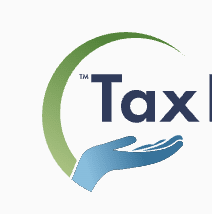
In this guide, we'll break down how tax refund advances work, their pros and cons, and offer other options for tax advance refunds. If your tax situation is complicated or you feel like you are drowning this tax season, check out our best tax relief companies for expert help.
Key Insights
- Tax refund advances are short-term loans based on your anticipated IRS refund.
- These advances are usually interest-free but may involve tax prep fees or hidden costs.
- Quick access to funds is a perk, but consider alternatives offering better long-term value.
- Read the fine print and weigh your options before taking a tax advance refund.

How Tax Refund Advances Work
A tax refund advance is a short-term loan offered by tax preparation companies that allows you to borrow against your anticipated federal tax refund.
To qualify, you'll typically need to:
- File your return through the tax prep company offering the advance
- Apply during the filing process
- Meet basic eligibility requirements (based on income and sometimes a soft credit check)
The tax prep company partners with a bank to provide these loans. Once approved, you can receive:
- Between $250 and $4,000 (amounts vary by company)
- Funds within 24-48 hours
- Payment via direct deposit, prepaid card, or check
When you accept the advance, you agree that the IRS will send your actual refund to the issuing bank first—not directly to you. After the IRS processes your return, the bank:
- Repays itself the advance amount
- Deducts any tax preparation fees
- Sends you the remaining balance
Are Tax Refund Advances Really Free?
Despite claims of "no-fee, no-interest" loans, tax refund advances often have hidden costs you should understand:
- Required tax preparation services: Most companies require you to file through their service. According to the National Society of Accountants' most recent survey data, tax preparation services cost an average of $220 for non-itemized Form 1040 filing.
- Free alternatives exist: Filers who are willing to wait have free options through TurboTax, TaxSlayer, and H&R Block. The IRS offers free online filing for taxpayers with adjusted gross income under $84,000 and free fillable forms for all incomes.
- Additional fees may apply: Some services charge administrative or application fees. Prepaid cards may have activation fees that reduce your refund amount.
Pro tip: Even if you're comfortable with these fees to access your refund earlier, always read the fine print to understand how they affect the amount of your refund that actually ends up in your pocket.
The Pros and Cons of Tax Refund Advances
| Pros of Tax Refund Advances | Cons of Tax Refund Advances |
|---|---|
| Access to funds in 24 to 48 hours | Costly tax preparation fees |
| No interest or fees | Limited loan amounts for a portion of your refund |
| No hard inquiries on credit | If your advance exceeds your actual refund, you'll owe the difference plus interest. |
| Easy to apply for and receive if you’re already using a tax preparation company | Must use a tax preparation company to qualify |
Who Should (and Shouldn't) Consider a Tax Refund Advance?
Having access to a tax refund advance doesn't mean you have to take it. Consider your specific situation before deciding.
When to Consider a Tax Refund Advance
- Urgent financial needs: If you face unexpected medical bills, possible eviction, sudden income loss, or critical home/car repairs that can't wait.
- Already using paid tax prep: If you planned to use professional tax preparation services regardless of the advance option.
- No other viable options: When you cannot meet essential payment deadlines without your refund money.
When to Skip a Tax Refund Advance
- You can afford to wait: The IRS processes electronic returns in about three weeks or less (paper returns take 6-8 weeks).
- You can file yourself: Using IRS Free File or other free filing platforms saves you significant preparation fees.
- You want your full refund: Tax preparation fees required for advances can substantially reduce your total refund amount.
Alternatives to Tax Refund Advances
If your budget is tight during tax season, consider these options to bridge the gap until your tax refund arrives:
- Budget adjustments: Temporarily reduce non-essential spending to free up cash for necessary expenses. Look for subscriptions you can pause, entertainment costs you can cut, or discretionary purchases you can delay.
- Personal loans or credit lines: If you have decent credit, a small personal loan or line of credit may cost less than tax preparation fees associated with refund advances. Compare interest rates and terms carefully.
- Borrowing from family or friends: This option eliminates filing fees and typically offers more flexible repayment terms. Be sure to clearly communicate when and how you'll repay to preserve relationships.
- File early and electronically: The sooner you file (and e-file), the sooner you'll receive your refund. Direct deposit further speeds up the process, often delivering refunds within 21 days.
Pro tip: Learning how to structure your finances to pay less taxes can help you keep more money throughout the year, reducing your dependency on tax refunds altogether.
How to Apply for a Tax Refund Advance
If you decide that a tax refund advance is right for you, follow these steps to ensure the process is as quick and seamless as possible:
1. Research Tax Preparation Services
Compare fees and customer reviews for tax preparation services you're considering. Also, read over any tax refund advance fine print available to uncover any hidden fees.
Understanding how long it takes to get a tax refund through normal channels can help you decide if the advance is worth the potential costs.
2. Gather Necessary Documents
Bring the following items to your appointment:
- Valid photo ID
- Social Security numbers (yours and dependents')
- Income documents (W2s, 1099s)
- Last year's tax return
- Proof of deductions
- Health insurance information
- Investment records
- Childcare/education expense documents
- Bank routing and account numbers (for direct deposit of your refund advance)
3. Complete Application
During your tax preparation session, you will fill out your application before the professional files.
4. Read Terms Carefully
Read the loan disclosure agreement carefully to uncover hidden fees. If you choose a prepaid card, ask specifically about an activation fee.
5. Monitor Your Actual Refund
Even though you're walking away with a chunk of your refund almost immediately, you should still track your refund and confirm the amount. If your refund is less than the projected amount, you may owe money.
Bottom Line
Tax refund advances can offer welcome relief if you're low on cash and high on financial stress during tax season. However, they're not a one-size-fits-all solution and might cost you more than you expect.
While tax preparation companies often boast tax refund advances as interest-free, no-fee loans, they typically come with high filing fees and potential hidden charges.
For those with complex tax situations, knowing how to choose a tax relief service is equally important—look for qualified professionals, transparent pricing, and proven success records.


